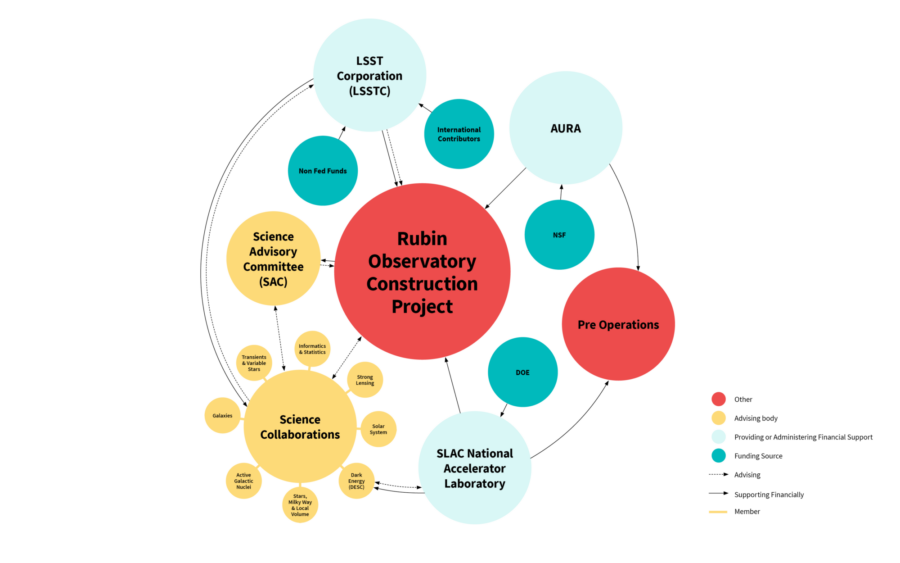Organization
It takes a whole planet to support an organization like Rubin Observatory—it wouldn’t exist without the support and participation of many individuals and institutions all over the world.
Funding
Rubin Observatory is supported by funding from the US National Science Foundation (NSF) and the US Department of Energy (DOE).
Our Partners
Rubin Observatory is operated by NSF’s National Optical Infrared Astronomy Research Laboratory (NOIRLab) and SLAC National Accelerator Laboratory. NOIRLab is managed by the Association of Universities for Research in Astronomy (AURA) through a Cooperative Agreement with NSF.
Our Facilities
The Rubin Observatory operational system consists of facilities located at several distinct geographic sites, as well as the dedicated high-speed networks connecting these sites:
- Summit Facility on Cerro Pachón, Chile, which houses the Simonyi Survey Telescope and the LSST Camera
- Base Facility and Chilean Data Access Center in La Serena, Chile
- US Data Facility and Data Access Center at SLAC, California, USA
- Headquarters Site (AURA) in Tucson, Arizona, USA
- French Data Facility CC-IN2P3 in Lyon, France
- UK Data Facility, IRIS network, United Kingdom
The Interim Data Facility (IDF), hosted on Google Cloud, plays an important role in Pre-Operations activities and the Data Previews.
Our Scientists
Rubin Observatory scientists have self-organized into eight Science Collaborations focused on specific research areas, from stars or our solar system to distant galaxies and galaxy clusters.
The LSST Discovery Alliance
The LSST Discovery Alliance (LSST-DA, formerly LSST Corporation) is a non-profit organization dedicated to maximizing the science impact of the Rubin Observatory Legacy Survey of Space and Time. LSST-DA provides support for the Rubin Observatory/LSST Science Collaborations, and funds workshops, classes, internships and more to train and engage future users of Rubin Observatory.


